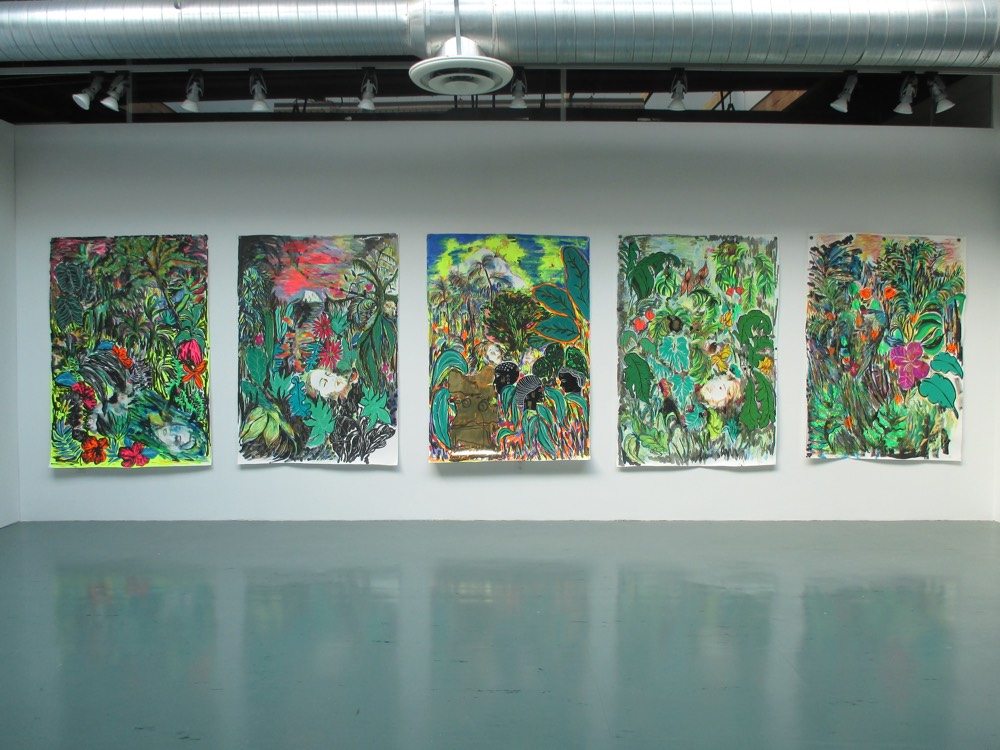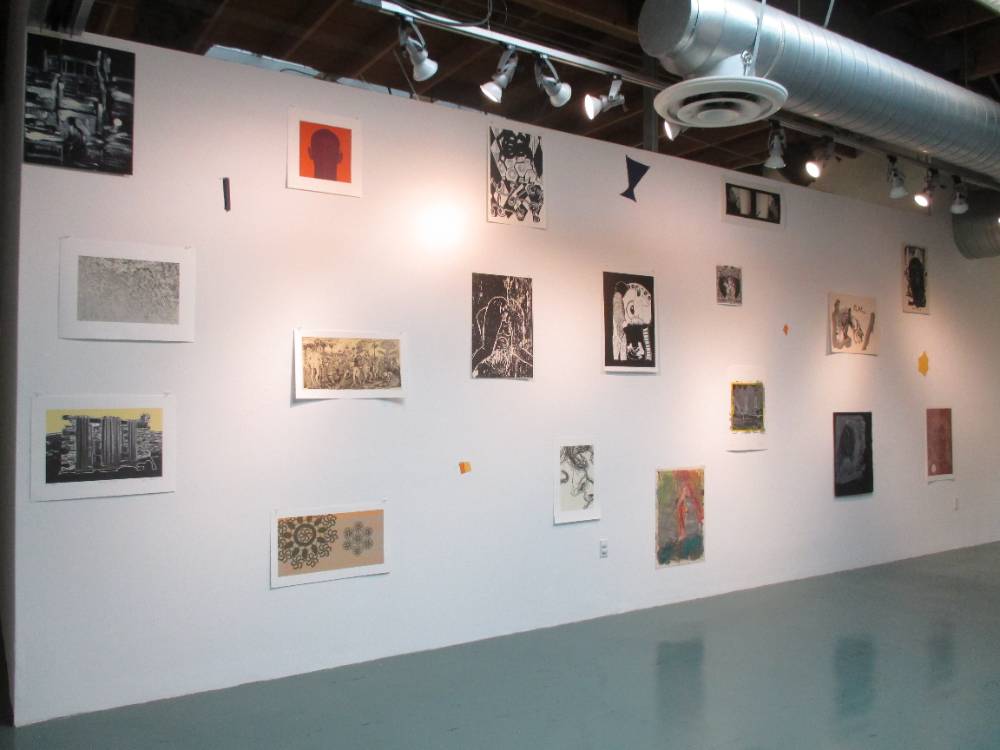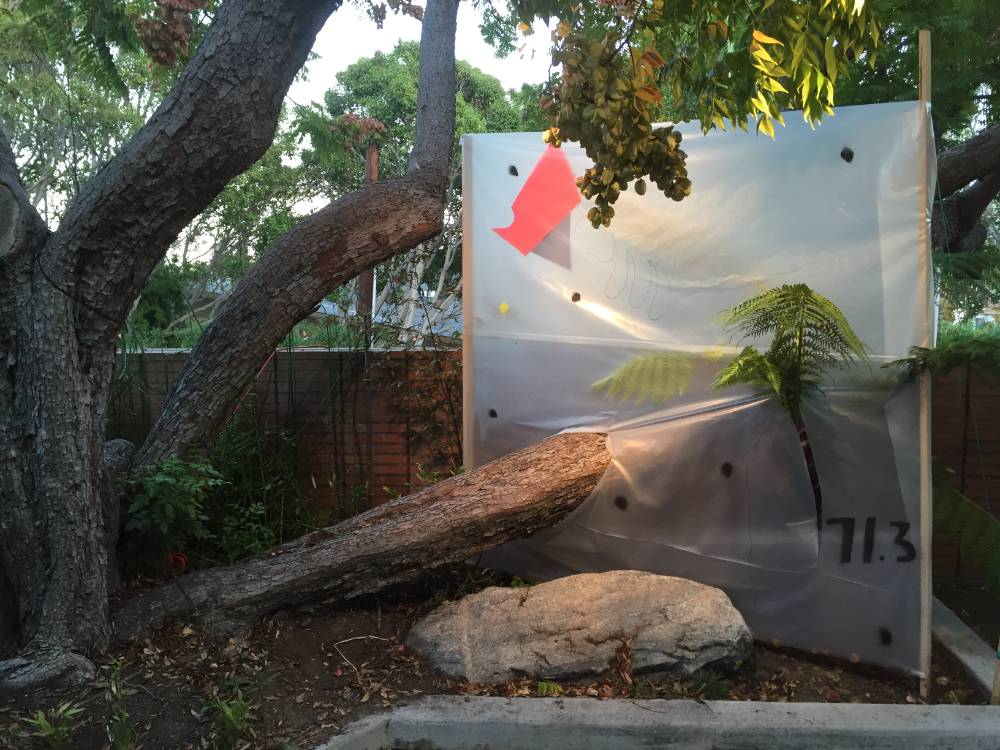Manhattan Beach Art Center Sur:biennial 2015
SUR:Biennial > 2015 > Manhattan Beach
Carolyn Castano, Physiognomy of Tropical Vegetation in South America, After Humboldt
and Berg (series) 2015.
Carolyn Castano
Carolyn Castaño is a Los Angeles-based artist whose work in painting, drawing, video, and mixed-media installations has been exhibited both nationally and internationally. Ms. Castaño's artwork will be featured in the 2016 Los Angeles Film Festival. Her work has recently been exhibited in the 2015 the 56th International La Bienniale di Venezia in We Must Risk Delight-Twenty Artists from Los Angeles at the Magazzino Di Sale, curated by BARDO-LA, LACMA’s Fútbol: The Beautiful Game and the critically acclaimed exhibition, Phantom Sightings: Art After the Chicano Movement, which traveled to the Museo Del Barrio, New York City and the Museo de Arte Contemporaneo Rufino Tamayo in Mexico City. Other exhibitions include LA Now: Emerging Artists, Galerie Dominique Fiat, Paris, Liquid Los Angeles: Contemporary Watercolor Painting in Los Angeles at the Pasadena Museum of California Art, Semi-Precious, The Public Art Fund, New York and International Paper, an exhibition of drawings at the Hammer Museum. Ms. Castaño has had solo exhibitions at Walter Maciel Gallery, Los Angeles, Kontainer Gallery, Los Angeles and Lombard- Freid Fine Art, New York. She has a Bachelor of Fine Art degree from the San Francisco Art Institute and a Masters in Fine Art from the UCLA School of Art and Architecture.
Artist Statement
My contribution to the Sur Biennial at the Manhattan Beach Art Center features three distinct bodies of work: Other Feminist Histories, Physiognomy of Tropical Vegetation in South America: After Humboldt & Berg, and Garden Heads.
Other Feminist Histories ( La Sala de Nati) features three little or under-known female heroines prominent in the social and cultural revolutions of Latin America; Tanya Bunke-Bider, aka “Tania La Guerillera, Violeta Parra, and Natalia Revuelta. Historically, paradigm-shifting events, such as the Cuban Revolution, the Colombian war of Independence and the Chilean social movements are attributed to grand male actors, the names we often hear of are Simon Bolivar, Fidel Castro, Che Guevara, and Salvador Allende, amongst others.
Other Feminist Histories (La Sala de Nati) is modelled after Natalia Revuelta's famous living room where key battles of the Cuban Revolution were planned. Revuelta, a Cuban socialite, supported the ideals of the revolution and helped the cause with what she could, by offering her living room as a safe space for Fidel Castro and his rebels to meet. Revuleta's gesture of offering her home is a decidedly "feminine" one, of a homemaker offering nurturing, but it is also a feminist; women have often been key players in revolutions, working double-time as wives and nurses, lovers and messengers or spies, and advisors/mistresses.
In this modified living room, "la sala" becomes a meditative feminine space, where the sitter can plan or meditate on their own feminist revolution. Visitors are invited to view a suite of watercolor drawings dedicated to a female artist, writer, or revolutionary, while sitting on the armchair, which has been custom upholstered with a unique digitally printed fabric, based on a watercolor drawing of the Cattleya Trianae orchid, a symbol of womanhood.
Surrounding the armchair are three lightboxes featuring Violeta Parra, the Chilean singer songwriter who's music was the soundtrack for the student movements in Chile and Argentina, Tanya Bunke Bider, aka Tanya La Guerrillera, an Argentinian anthropologist and socialist, who travelled alongside Che Guevara to Bolivia in hopes of spreading Cuba's socialist revolution and lastly Natalia Revuelta, whose Havana living room was site of many secret revolutionary meetings and battle plans.
Physiognomy of Tropical Vegetation in South America: After Humboldt & Berg immerses itself in a visual tradition at the root of many of these conversations: the maps, painted travelogues and scientific illustrations that were critical tools of colonialism, botany and pharmacology. This work is inspired by two 19th Century botanical explorers, Alexander Von Humboldt, who created a study of native birds, flowers and plants in the Americas, and Albert Berg, who painted the Magdalena River Valley in Colombia. My own investigations play off Humboldt and Berg’s rich legacy of botanical and geographical illustration, evoking both abstract and figurative painting as well as the current political and ecological state of the Magdalena River, site of an ongoing armed conflict between the Colombian government, Marxist guerrillas, right-‐wing paramilitaries and narco-‐traffickers.
In Garden Heads, the heads of men who may (or may not) have been decapitated are found in lush, tropical landscapes rendered in watercolor and pastel drawing. These works remix traditions of portraiture and botanical illustration while also attempting to meaningfully engage the flood of horrible imagery that is as much a product of the drug trade as the drugs themselves. The drawings also unpack recent, gruesome spectacles of violence by connecting them to archetypal representations of the male body found in the Bible and in western myth, such as John the Baptist or Orpheus.
El Nopal Press, installtion shot, Various Artists.
El Nopal Press
In 1990, Francesco X. Siqueiros founded El Nopal Press. El Nopal continues to thrive
today from a studio located in
Downtown Los Angeles. The conceptual focus of El Nopal is to underline the heterogeneity
of cultural production
and question the hegemony the current dominant cultural perspective. El Nopal has
published such artists as John Valadez, Analia Saban, Ruben Ortiz Torres, Harry Gamboa,
Jr., Doctor Lakra, and Mariana Botey.
Francesco Siqueiros, 71.3, Site Specific Mixed Media Installation, Dimension Variable,
2015.
Francesco Siqueiros
Francesco X. Siqueiros graduated from UC Berkeley with a Bachelor’s degree in psychology,
and from the Sorbonne
in Paris, France, with a Bachelor’s degree in Plastic Arts. Following his studies,
he spent several years working as a
painter in New York and then returned to California to do graduate work concentrating
in lithography at UC Santa Cruz. From Santa Cruz, Siqueiros moved to Los Angeles,
where he began working at the printshop Cirrus Editions, where he collaborated with
various west coast artists including Ed Ruscha, John Baldessari, Lari Pittman, Laddie
John Dill, Karen Carson, Lita Albuquerque, and others. Siqueiros has taught at several
universities and art colleges, including, Art Center College of Design, UCLA, University
of Southern California, Otis Art Institute, La Esmeralda in Mexico City, and Occidental
College. He has been a lecturer and panelist in Los Angeles and other locations throughout
California and Mexico on the topics of printmaking and cultural production.




Stay Connected